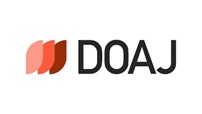Abstract
Researches about the relationship between SST (Self Service Technology) and TRI (Technology Readiness Index) have been carried out after WI was developed by Parasuraman and his colleagues (2000). We hypothesize Consumer Readiness can also influence consumer`s motivation, attitude, and intent to use SST Currently, there has been no research on this subjet. In this study, we investigated the relationship between TR. Consumer Readiness and SST Core Athtudinal Model which Dabholkar & Bagozzi (1994) proposed. The researchers also investigated moderating effects of consumer traits and situational factors to verify the acceptance of such forms of service delivery by all kinds of consumers and under different situational contexts. Self consciousness, the need for interaction with an employee, and the technology anxiety were used as consumer trait variables, Perceived waiting time and perceived crowding were used. as situational variables, 380 questionnaires were distributed to a sample group of people in their 20`s and 30`s, and the data were analyzed with structural equation model using AMOS 18.0 program All of Cronbach`s alpha values representing reliabilities were satisfactory. The values of Composite Reliability (CR) and Average Variance Extracted (AVE) also showed the above criteria, thus providing evidence of convergent validity. To confirm discriminant validity among the constructs, confirmatory factor analysis and correlations among all the variables were examined. The results were satisfactory. The results of this study are summarized as follows. 1. Optimism and innovativeness of TR partially influenced the motivation to use SST. People who tend to be optimistic use SST because of ease of use and fun. The innovative however, usually use SST due to its performance. However, consumer readiness of role clarity, ability and self-efficacy influence all the components of motivation to use SST, ease of use, performance and fun, The relative effect of consumer readiness on the motivation to use SST was much stronger and more significant than that of TR, No other previous studies have examined the effects of Consumer Readiness on SST usage motivation, attitude and intention. It is academically meaningful that the researchers verified that Consumer Readiness is the important precedent construct influencing the self service technology core Attitudinal Model. Our findings suggest that marketers should consider fun and ease of use attributes to promote the use of self service technology. In addition, the SST usage frequency will rise rapidly when role clarity, ability, and self-efficacy which anybody can easily handle SST is assured. if the SST usage rate is increased, waiting times for customers could be decreased. Shorter waiting time could lead to higher customer satisfaction. It may also result in making a long-term profit owing to the reduced number of employees. Thus, presentation of using SST by employees or videos showing how to use it will promote the usage attitude and intent. 2. In SST core attitudinal modal, performance and fun factors among SST usage motivation affected attitudes of using SST. The attitude of using SST highly influenced intent to use SST. This result is consistent with previous researches that dealt with the relationship between motivation, attitude and intention. Expectation of using SST could result in good performance just like the effect of ordering menu to service employees and to have fun since fun during its use could promote more SST usage rate. 3. In the relationship among motivation, attitude and intent in SST axe attitudinal model, the moderating effect of consumer traits (self-consciousness, need for interaction with service employees and technology anxiety) and situational factors (perceived crowding and perceived waiting time) were tested. The results also supported the hypothesized moderating effects except perceived crowding. The highly self-conscious tended to form attitudes to use SST because of its fun compared to those who were less self-conscious because of its performance. People who had a high need for interaction with service employees tended to use SST for its performance. This result indicates that if ordering results are assured, SST is easily accessible to even consumers who have a high need for interaction with a service employee. When SST is easy to use, attitudes strengthen intent among people who had a high level of anxiety of technology. People who had low technology anxiety formed attitudes to use SST because of its performance. Service firms must ensure their self service technology is designed to be easy to use for those who have a high level of technology anxiety. Shorter perceived waiting times strengthened the attitude to use self service technology because of its fun, If the fun aspect is assured, people willing to use self service technology even perceive waiting time to be shorter than it actually is. Greater perceived waiting times form higher level of intent to use self service technology than those of shorter perceived waiting times. This implies that people view self service technology as a faster alternative to ordering service employees. The fun aspect of self service technology will attract a higher rate of usage for self service technology. 4. It has been proven that ease of use, performance and fun aspects are very important factors in motivation to form attitudes and intent to use self service technology regardless of the amount of perceived waiting time, self-consciousness, need for interaction with service employees, and technology anxiety, Service firms must consider these motivation aspects (ease of use. performance and fun) strongly in their promotion to use self service technology. Ease of use, assuring absolute performance compared to interaction with service employees`, and adding a fun aspect will positively strengthen consumers` attitudes and intent to use self service technology. Summarizing the moderating effects, fun is the most valuable factor triggering SST usage attitude and intention, Therefore, designing self service technology to be fun will be the key to its success, This study focused on the touch screen self service technology in fast food restaurant. Although it has its limits due to the fact that it is hard to generalize the results to any other self service technology, the conceptual framework of this study can be applied to future research of any other service site,
Recommended Citation
Shim, Hyeon Sook and Han, Sang Lin
(2012)
"기술 준비도와 소비자 준비도가 Self Service Technology 사용동기와 태도 및 사용의도에 미치는 영향,"
Asia Marketing Journal: Vol. 14
:
Iss.
1
, Article 3.
Available at: https://doi.org/10.53728/2765-6500.1471
Creative Commons License

This work is licensed under a Creative Commons Attribution 4.0 License.





